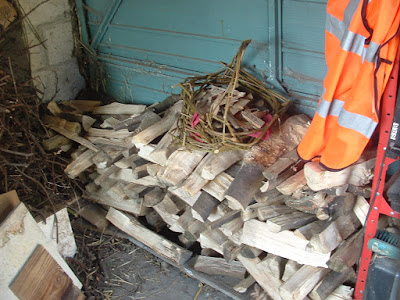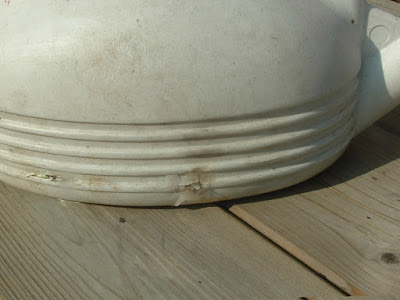 |
| Snap peas and supports, Apr 2019 |
Back in the garden, I've got two double rows each of mange tout and snap peas. I also put down about 40 climbing French beans in the gaps of the snap peas (they went down several weeks ago, and I still had seeds left over from the allotment), as I didn't want to waste all those lovely twiggy supports I'd put up. And I've got another 150ish dwarf French beans and about 20 runner beans presprouting in my garage.
I presprout all my peas and beans: a handful of damp compost into a plastic bag, then tip in all the seeds, roll down the top and keep in a moderately sheltered place until they start to sprout, then sow in their permanent places. I didn't get much success with sowing direct without presprouting, and I also don't have the time/space to grow them all to seedling stage in seed trays--they don't transplant well unless they are grown in long tubes, such as toilet paper tubes (or rolled up newspaper) so their roots are undisturbed. There is no way I could do this with the 700+ seeds--I've done it in the past with 50 or so runner beans, but...
What am I going to do with all these peas and beans, assuming they all produce? Most of them will be dried for winter use. The broad beans will be for fresh eating, as will the snap and mange tout peas. The dwarf French beans will be for fresh eating and also salting for winter use.
We need to get back to the allotment next weekend and get some supports up for the climbing beans--everything else has its necessary supports, but I've kind of run out of sticks and canes...







